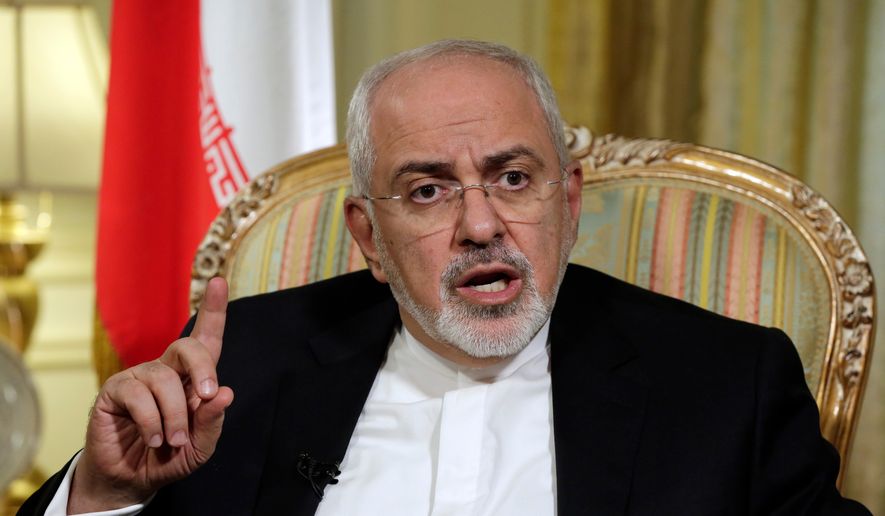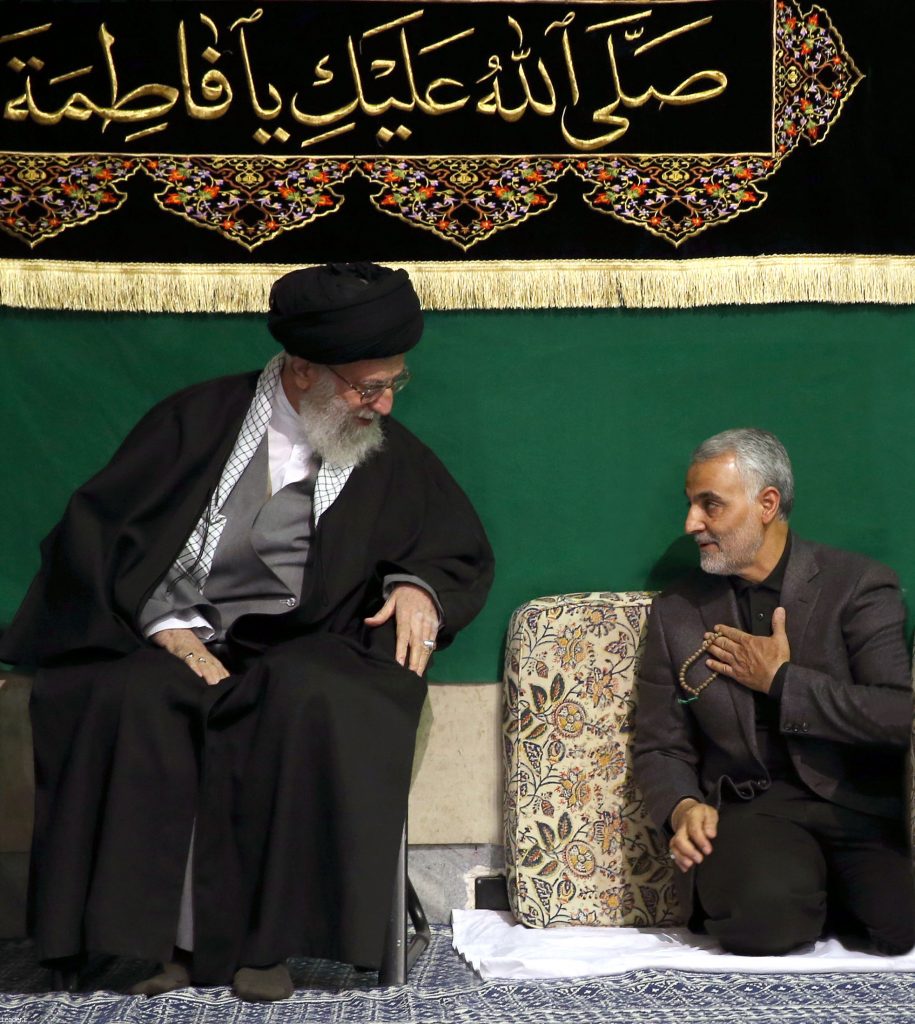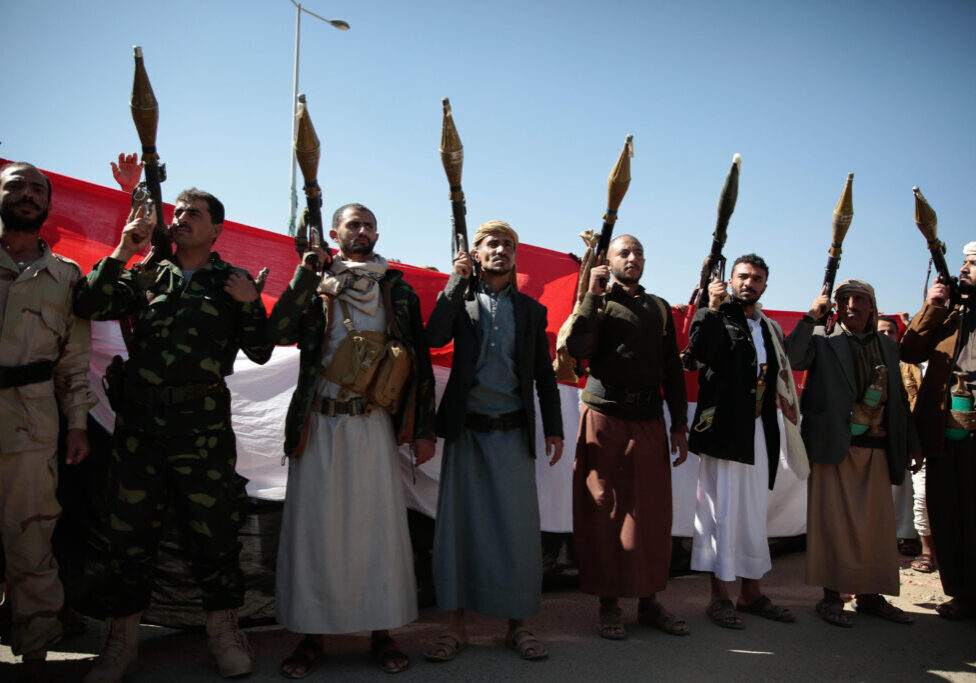Australia/Israel Review, Featured
The False Prophets of the JCPOA
Nov 29, 2018 | Ran Porat

Renewed sanctions and Iran under pressure
The second round of US sanctions against Iran, following US President Donald Trump’s decision to abandon the Joint Comprehensive Plan of Action (JCPOA) nuclear deal with Iran in May this year, kicked in on November 5. Existing sanctions on the energy and transport sectors in Iran have been dramatically enhanced with new measures targeting Iranian crude petroleum exports and financial institutions.
Recently, I examined the cost-benefit balance of the nuclear program for Iran (“The Price of a Nuclear Weapon”, AIR, August 2018). My conclusion was that the heavy price of Iran’s nuclear project was only worthwhile for the Ayatollahs if the Islamic republic reaches a “threshold nuclear entity” status, which will enable it to quickly acquire a nuclear bomb.
It seems like a good time to revisit some of the warnings issued by supporters of the JCPOA when criticising the US withdrawal from the deal in May 2018. Examining their pessimistic forecasts should the nuclear agreement be scrapped strongly suggests that their prophecies of doom were mistaken, and that the new US policy has genuinely opened up an opportunity for a better outcome in Iran.
Prediction: The sanctions would cause the Iranian people to reunite behind the regime against an external enemy
Key economic indicators reflect the disastrous impact of the sanctions regime on the Iranian economy. For example, oil exports declined to 1.1 million barrels per day (bpd) in October, down from 2.5 bpd in April. Since oil accounts for nearly 80% of Iran’s tax revenue (US$50 billion in April), this reduction in exports meant losses of billions of dollars to the regime’s coffers. Inflation is sky rocketing, while the Iranian currency, the Rial, has been in a devaluation spiral– from around 10,000 rials to US$1 in 2010, to being artificially set at the government rate of 42,000 rial to US$1 in August but with a real price of 130,000 rial to US$1 on the black market. Cancellation of major deals with Teheran by foreign companies have also had strong negative economic consequences. Planned aeroplane sales cancelled by Boeing and Airbus alone were valued at US$40 billion. The World Bank estimated in October that Iran’s economy would “be negatively affected [by the sanctions], contracting annually by 1.4 percent between 2018/19 to 2020/21 on average”.
Yet, the Iranian people are not uniting behind the regime. On the contrary, the escalating decay in the economic and social arenas have continued fuelling dissent. Unable to purchase basic products and struggling under unprecedented unemployment (a third of young Iranians are reportedly unemployed), protests have spread to over 70 towns and cities. Key constituencies making up the protests have been young people, women, workers, bazaar merchants, truck drivers, teachers and many others.
The regime is feeling the heat. Iranian Foreign Minister Javad Zarif angrily tweeted about the sanctions as “utter disregard for rule of law and human rights of an entire people.” Iran’s Supreme Leader, Ayatollah Ali Khamenei admitted that the Iranian people are in a “sensitive” situation due to “the economic problems of the nation and the tightness of the livelihood of a large portion of the weak people in the country.”
The people of Iran, however, reject the regime’s slogans which blame the US for their misery. Instead they are calling for freedom, women’s rights and justice.
It’s important to note that there is a common historical misconception about the essence of what happened in Iran during the 1979 revolution. Sociologist Misagh Parsa has extensively reviewed the various protest activities by Iranians in the lead up to the overthrow of the Shah, as well as the ruthless measures taken by religious leader Ayatollah Ruhollah Khomeini to consolidate his power after the Shah fled the country.
Parsa explains that “none of the principle collectivities that took part in the revolutionary struggles called for a theocracy in Iran”, and that “simple, overarching ideological explanations of the revolution do not do justice to the complexity of the causes and processes of the Iranian revolution”. What happened in 1979 cannot be reduced to an Islamic revolution alone, as most Iranians wanted freedom from oppression and did not advocate for a religious regime – yet an oppressive religious regime is what they got.
In that context, US Secretary of State Mike Pompeo’s promise to “advocate tirelessly for the Iranian people” is of important moral value and also an overdue effort to undo a historical injustice. Pompeo is echoing the Iranian people’s true aspirations, when he demands from the regime that it “must improve how it treats its citizens”. This firm anti-regime message is the complete opposite to the policy of the previous US administration, because the JCPOA meant crucial support for the survival of the regime in the form of hundreds of billions of dollars, false hope for economic rehabilitation and a general US approach predicated on doing nothing which might upset or anger Teheran.

Ayatollah Ali Khamenei, head of the clergy group in Teheran, and Qassem Soleimani, commander of the Quds Brigades of the IRGC of the military faction
Prediction: The ‘hardliners’ inside the regime will become more powerful
The most popular narrative about Iranian politics suggests a binary division between moderates and hardliners. President Hassan Rouhani is labelled a moderate, Supreme Leader Ali Khamenei and the Iranian Revolutionary Guard Corps (IRGC) are considered hardliners.
When the US decided to leave the JCPOA, supporters of the nuclear deal strongly warned that this move would embolden the hardliners in Teheran. Sanam Vakil, from Johns Hopkins University, made this frightening prophecy: “Trump has handed a unique opportunity to hardline political elites to build on Iranian frustration. Not only can the hardliners use the breakdown of the deal to establish unity among the divided elites, but they can also build bridges with the Iranian population after protests in January. The knock-on effects of conservative unity could even lead to a victory for a hardline candidate in the 2020 parliamentary elections and the 2021 presidential poll”.
Responding to Australian PM Scott Morrison’s decision to review the government’s policy on Iran in October, a former Obama administration official cautioned that if Australia withdraws its support for the deal, this “could help embolden Iranian hardliners to back out of their country’s own commitments”.
Yet, the effects on Iranian politics of the US withdrawal from the deal and the sanctions are far more complex, and so far, it seems that the move has helped push the “hardliners” into a corner, rather than empowering them.
Technocrats, military and clergy
To understand the political reality in Teheran, the internal politics of the Iranian regime should first be re-mapped. Instead of hardliners and moderates, Teheran is actually better depicted as being governed by three groups; clergy, military and technocrats – which form alliances between themselves and accordingly shape Iran’s policies. Iranian politic expert Saeid Golkar explains that “Rouhani represents the clergy-technocrat alliance […] Khamenei, is also closer to the alliance of the clergy and the military (IRGC)”. In many respects, and specifically with respect to the regime’s hatred of Israel and the US, there are no differences between these groups and there are no ‘moderates’.
What has happened now is that the technocrats, who negotiated the nuclear deal, are gaining momentum. In the meantime, tensions have surfaced in the clergy-military alliance. This is because the US withdrawal from the JCPOA redefined the positions of all sides who negotiated the deal.
Washington has assumed the role of the “bad cop” carrying the ‘big stick” of sanctions and presenting a long list of demands to Iran. At the same time, the US President openly is saying that he is willing to renegotiate a new arrangement on his terms, “We’re ready to make a real deal”.
This approach leaves other JCPOA signatories in an awkward position. France, UK, Germany, Russia and China tirelessly worked with the Obama Administration to achieve the agreement. They now refuse to back away from it. This is why they have repeatedly stressed that the deal stands and accordingly pressure Iran to keep to the terms of the JCPOA at any cost. They have also tried to find creative ways to circumvent the sanctions – for example, by setting up an international payment mechanism to replace the existing one (SWIFT), which, under US pressure, has stopped dealing with most Iranian banks. Yet, so far, all such efforts have been failing. This is mostly because of the inability of these countries to produce enough leverage to counter the fear of companies of losing business and being punished by the US if they continue having Iran as a client.
Teheran is stuck between an American rock and a European hard place. The technocrats inside the regime are clinging to the JCPOA because they hope that the Europeans and others, including China, will be able to salvage the economic benefits promised as part of the nuclear package, and that these ‘gifts’ would stabilise their control over the country. The military, engaged in intervention and destabilisation across the Middle East and heavily invested in crime and terrorism, vehemently rejects this idea, preferring confrontation – partly for selfish financial reasons (see below). Seeing the internal unrest and fearing they might be toppled, the clergy is currently siding with the technocrats, playing it safe and maintaining its support for the JCPOA.
This is why Teheran is carefully engaging in brinkmanship – threatening to scrap the JCPOA and fully renew the nuclear program, yet never actually making the decision to do so. “I have ordered Iran’s atomic organisation that whenever it is needed, we will start enriching uranium more than before” within weeks, said Rouhani immediately after the US left the JCPOA. But this has not happened, and at least publicly, Iran has not breached the deal.
So Iran is under increasing pressure, but is no closer to a nuclear bomb than if the US had remained in the deal.
How the demand from JCPOA signatories to curb terror funding revealed internal tensions
Current internal regime tensions surfaced following the demand on Oct. 7 by the remaining signatories to the JCPOA for Iran to enact laws that would enable Teheran to join the international Convention for the Suppression of the Financing of Terrorism (CFT). This step is a precondition for Iran to be fully removed from the blacklist maintained by the Financial Action Task Force (FATF) – an intergovernmental organisation fighting money laundering, including for terror. The argument being put to Iran is that this is a necessary action to assist in the efforts to combat US sanctions. However, money laundering and counterfeiting provide considerable funds to support Iran’s terror activities, specifically to the IRGC’s elite Al-Quds force and to its subsidiary in Lebanon, Hezbollah.
It is no wonder that a political struggle has erupted. The technocrats pushed hard to approve the new anti-money laundering laws in Iran’s parliament, despite death threats. However, these laws were rejected by the clerical Guardian Council of the Constitution. Speaking about this issue, Foreign Minister Zarif, a technocrat, was surprisingly frank, stating on Nov. 10 that “many people in Iran benefit from money laundering”, and pointing a finger at the IRGC without naming them and calling them “the country’s powerful apparatus”. In response, clerics, politicians and IRGC senior figures signed a petition opposing Iran’s accession to the CFT and FATF treaties. Meanwhile, in the parliament there are calls for Zarif to be impeached, while clerics and politicians who align with the technocrats have rushed to his defence.
Maintaining the pressure
The monitoring and limiting aspects of the JCPOA are still in place, as confirmed by the remaining JCPOA signatories. This does have a positive restraining effect on the break-out time Iran may need to create a nuclear bomb, estimated to be a year (instead of three months before JCPOA).
A race against time is now on. In Teheran, the regime is hoping to wait out the current storm. Looking at the 2018 US midterm election results, the Mullahs are praying that Trump changes his approach to accommodate a Democrat-controlled Congress, or that he will be replaced in 2020 by someone ready to return towards a policy of appeasement toward Iran.
Meanwhile, the economic pressure on Teheran, and the ticking time bomb of ongoing popular unrest it helps fuel, makes continued recalcitrance a growing risk for the regime.
Australia, prudently reviewing its Iran policy, would constructively be furthering its national interests by immediately joining the American efforts to gain as much leverage as possible from the pressure on Iran. At the very least, it should be seeking to work with the US to push Teheran into discussing a new agreement that would finally address its missile program, ongoing support for international terrorism and put in place genuinely robust and permanent arrangements that will keep Teheran’s nuclear weapons ambitions at bay.
Dr. Ran Porat is a researcher and lecturer at the Australian Centre for Jewish Civilisation at Monash University and a research fellow at the International Institute for Counter-Terrorism, Interdisciplinary Centre, Herzliya.
Tags: International Security, Iran, JCPOA






